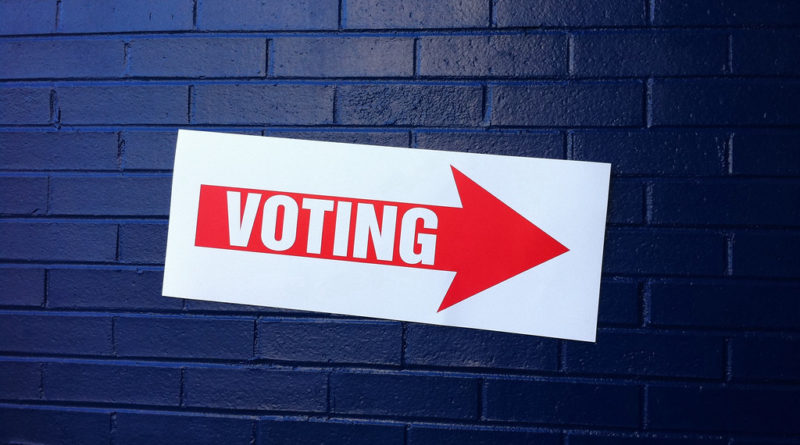OPINION: Ohio primary paints a picture of how voting might be affected by COVID-19
Coronavirus and its’ impact on the Ohio primary, photo courtesy of Flickr.
Zoe Hill
Opinions Staff Writer
A month ago, I published an article praising Ohio Gov. Mike DeWine for his immediate and proactive response to the COVID-19 situation in Ohio.
Our situation in this uncharted territory changes daily, sometimes even hourly, and many new rules and orders have been put into place since.
All things considered, while I would love nothing more than to move out of my dorm or celebrate my birthday with my friends next week, I maintain that Ohio’s coronavirus efforts led by DeWine are both extremely appropriate and absolutely necessary.
However, Gov. DeWine made a risky misstep in mid-March, that of which we are just now seeing the consequences.
The week that changed life as we knew it, everything was up in the air. That same week, the Ohio Primary was scheduled to take place. Shutdowns and cancelations were, at the time, shocking and unheard of, not to mention incredibly confusing in some situations.
The morning before in-person voting for the election, Gov. DeWine had stated his desire to postpone the election. Having said this publically, many Ohio voters took this as an official notification to not go out and vote the following day.
However, it is not within DeWine’s power to manipulate voting. Because of this, he had to file a lawsuit with the Franklin County courts, which was denied by the judge on the grounds that it would set a poor precedent for the democratic process.
With this ruling, the election was on. Then, in just a few hours, the director of the Ohio Department of Health, Dr. Amy Acton, issued a state of emergency, and Ohio’s Primary was off again.
The state of Ohio went through the emotions of an on-again, off-again primary in just a matter of 24 hours. And throughout this saga, Ohio voters were misled by conflicting news reports.
CNN had falsely reported that a judge had signed off on postponing the election to June 2, while smaller local stations were reporting the opposite.
As someone who is constantly keeping up with the news and politics, even I was absolutely confused. My biggest concern, however, was how this might affect voter turnout.
If the election was happening, the people who wanted to vote would have seen the governor’s statement of the false news report and stayed home on March 17. For others, all of the back and forth may have just been enough to frustrate them to the point of not voting at all.
March 17 came and went, and, as it turns out, the primary really was postponed. A week later, another confusing announcement came out: the election would take place on April 28. DeWine had called for it to be moved to June, and the stay at home order would still be in effect by the end of April.
Now in a post-primary world, we as a state can look at how this mess of litigation, fake news, and unfounded claims can drastically disrupt the democratic process. One of the biggest changes can be seen in the Democratic presidential race.
In mid-April, Sen. Bernie Sanders dropped out of the race, making former Vice President Joe Biden the presumptive nominee and, by extension, essentially eliminating the need to vote for a presidential candidate. With this being a primary election, oftentimes this race is the main draw for voters.
It is unclear whether or not it was the confusion, the circumstances, or Sen. Sanders’ withdrawal that affected the voter turnout numbers, but the 2020 primary saw only 22.66% of registered voters cast a ballot, which is just half of what the 2018 primary recorded.
It is still very early to determine near-perfect numbers, but as of now, less than 1 in 4 registered Ohio voters participated in the mail-in primary. A couple hundred thousand ballots are still outstanding or labeled provisional, but I do not expect the statistics to be altered greatly by further data.
As a relatively new voter and someone who is very invested in our country’s political climate, the moment Gov. DeWine mentioned a postponement, my heart sank. In his position, saying those words aloud already decreases voter turnout. Followed by the madness that ensued, I just knew that this primary would be another victim of the pandemic. It’s disheartening to see these numbers and have my predictions come true, especially in such a pinnacle year for our democracy.
With the consideration that every vote was either cast early at the local board of elections or through the long mail-in process, having nearly 2 million Ohioans prioritizing this primary is hopeful.
I extend this hope to the general election this fall. I am deeply optimistic that we will discover how to perfect remote elections for 2020 and going forward. My hope is that our experiences this year will extend voter rights and eligibility to make democracy more accessible for everyone.
There are people in this state and this country who care about the integrity and prosperity of our elections, and I commend the Ohioans who took the time, energy, and postage to vote in the 2020 Ohio Primary election.
For more opinion pieces like Flyer News on Facebook and follow us on Twitter (@FlyerNews) and Instagram (@flyernews)

